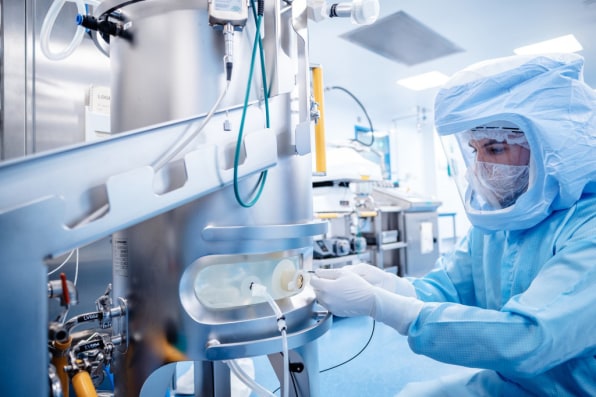In October 2021, a driverless train made its debut in Hamburg, Germany. Unlike automated monorails at airports, or the few driverless subway lines that exist around the world—which run only on their own tracks—the automated train in Hamburg shares its tracks with human-operated trains. It maneuvers through main rail traffic all on its own, matching the train timetable to the second, and operates in a more energy-efficient manner. The digital S-Bahn, a project by Siemens and Deutsche Bahn with the city of Hamburg, can transport up to 30% more passengers than non-automated trains, all while reducing energy consumption by up to 30%.
[Photo: courtesy Siemens]The key to the fully automated railway is in its digitalization; An “automatic train operation” (or ATO system) steers the train, its computer constantly receiving information about timetables, signal commands, and speed limits, both from sensors and signal boxes. That use of digitalization is just one example of the digital work Siemens is doing, and the digital S-Bahn is just one of several entries Siemens submitted to Fast Company’s 2022 World Changing Ideas Awards that led to its selection as World Changing Company of the Year.
 [Photo: courtesy Siemens]With its digitalization efforts, Siemens is transforming not only transportation, but also indoor air quality in building management systems and the world of healthcare, from vaccine production to the manufacturing of medical devices. Siemens’s work with vaccine production software and digitalization also won the pandemic response category: The company helped BioNTech convert a facility in Marburg, Germany to produce its mRNA COVID-19 vaccine, which it developed with Pfizer, in record time—cutting the estimated over-a-year timeline to just five months, with automation and digitalization tech.
[Photo: courtesy Siemens]With its digitalization efforts, Siemens is transforming not only transportation, but also indoor air quality in building management systems and the world of healthcare, from vaccine production to the manufacturing of medical devices. Siemens’s work with vaccine production software and digitalization also won the pandemic response category: The company helped BioNTech convert a facility in Marburg, Germany to produce its mRNA COVID-19 vaccine, which it developed with Pfizer, in record time—cutting the estimated over-a-year timeline to just five months, with automation and digitalization tech.
That work included digitizing records for paperless documentation, so BioNTech could immediately fulfill all documentation requirements, and an automated weighing process that replaced manual work. But that wasn’t all: Separate from that work with the Marburg facility, Siemens also used digital twins to scale up the entire COVID-19 vaccine production process. Digital twins, a virtual model of a real-life object or system that can be updated with real-time data, and which uses simulations to try all sorts of decisions, allow pharmaceutical companies to run thousands of models and calculations at once—to figure out everything from how many machines a vaccine production facility needs to how full the vials should be to deliver an effective dose, without breaking or spilling over, and more—without doing meticulous tests tests one by one in a lab.
 [Photo: courtesy Siemens]Siemens also used digital twins in its effort to increase medical device manufacturing. The company is working with the FDA to bring digital twins, along with other software, to the manufacturing process of devices like ventilators and even face masks. Using digital twins in the production and performance evaluation of medical devices allows companies to share information with the FDA more quickly, speeding up the agency’s review process and expediting access to the public.
[Photo: courtesy Siemens]Siemens also used digital twins in its effort to increase medical device manufacturing. The company is working with the FDA to bring digital twins, along with other software, to the manufacturing process of devices like ventilators and even face masks. Using digital twins in the production and performance evaluation of medical devices allows companies to share information with the FDA more quickly, speeding up the agency’s review process and expediting access to the public.
And Siemens worked on another project aiming to keep buildings healthier. Called Dynamic VAV Optimization, the software uses machine learning and artificial intelligence to control HVAC systems, configuring them according to buildings’ priorities—whether minimizing virus transmission or reducing energy use. The pandemic showed the importance of our indoor air quality when it comes to virus transmission, and the climate crisis has put a spotlight on the environmental impact of our buildings: Building operations, including electricity and HVAC systems, account for around 28% of global CO2 emissions. With this tech, Siemens says, a building can optimize its ventilation, temperature, and humidity controls, keeping the indoor environments of our schools and offices both safe and sustainable.
[ad_2]
Originally Appeared Here